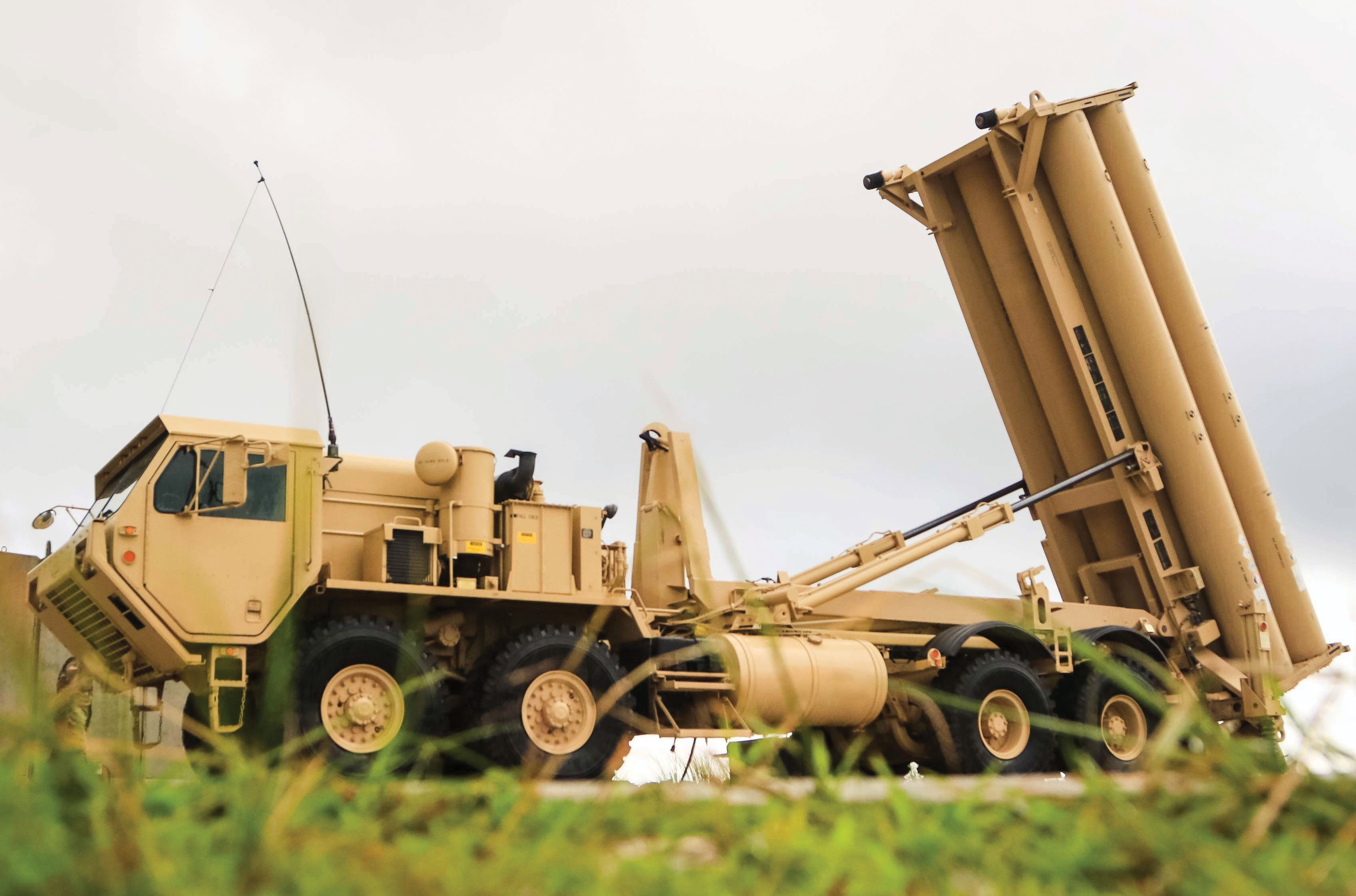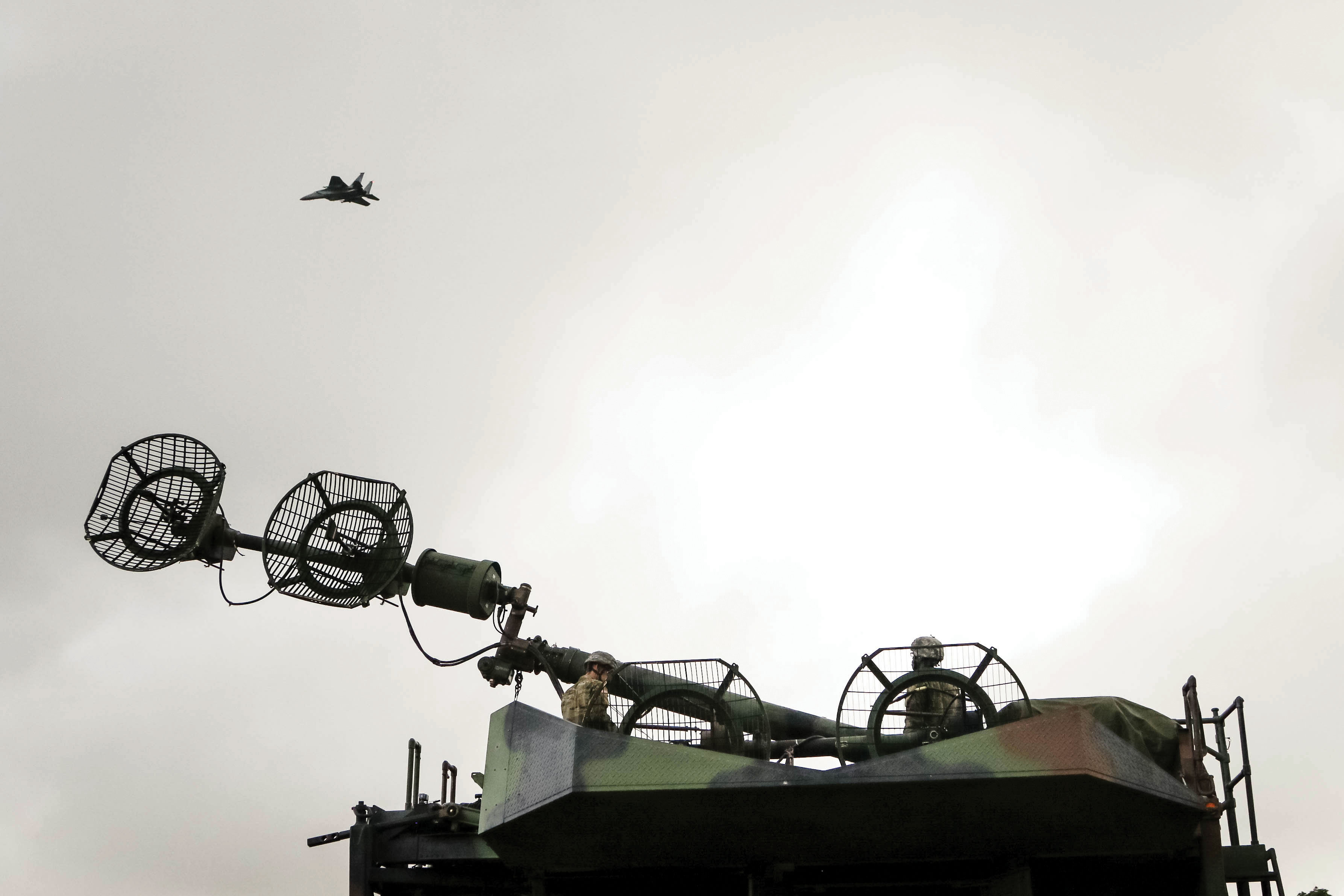
New technologies give the U.S. greater precision at greater range; stronger air and missile defense.
by Mr. Michael Holthe
Imagine a battlefield where U.S. forces do not enjoy freedom of maneuver, where supporting forces cannot guarantee dominance of the airspace above us or even the ability to communicate or track and locate threats. Imagine a battlefield where friendly forces are not only overmatched by range but where the enemy can employ myriad electromagnetic effects to deny or degrade our ability to lo-cate targets. Such a scenario is not only fast approaching, but is in many cases already upon us.
These very real, very urgent challenges are what drive the Army science and technology (S&T) strategy for lethality, both now and in the future. Our lethality strategy is anchored in its goal to regain and ensure overmatch against any adversary, at any time and in any environment to enable decisive joint warfighting capability and ensure freedom of maneuver to close with and engage with our adver-saries.
Among the critical modernization priorities, as identified by the secretary of the Army and chief of staff of the Army, that are key to U.S. forces seizing the initiative and owning the battlespace remain the ability to employ precision fires—that is, the ability to pre-cisely place a mortar round, artillery shell, cruise missile, etc., exactly where it will be most damaging to the enemy, at greater range than our adversaries—and the ability to protect those fires assets as well as our maneuvering forces as they drive toward the objective.
As the Army develops future long-range precision fires (LRPF) capabilities for both missile and cannon artillery, its requirements for what that system can do must take into account multiple, complex and integrated threats across the range of military operations in anti-access and area denial (A2AD) environments. Future LRPF must enable the joint force to continue to deter adversaries and, when necessary, enable fires overmatch and freedom of maneuver through the destruction, neutralization or suppression of adversary capabilities.
LRPF units must be mobile, expeditionary and prepared for global threats—an important emphasis as adversaries are investing in technologies to obtain a differential advantage and undermine the United States’ ability to achieve overmatch. Those threats include precision-guided rockets, artillery, mortars, aircraft, satellites, electronic warfare and ballistic and cruise missiles that challenge tradi-tional U.S. dominance in land, air and maritime domains. Success in this future battlespace also will require the ability to adapt to multiple scenarios. To overcome these challenges, the Army S&T community is exploring the development of technologies that will restore LRPF overmatch and protect friendly forces from air and missile defense threats.
In multidomain battle, future Army LRPF forces must provide precise, responsive, effective and multifunctional fires to enable ma-neuver forces as they fight across complex A2AD environments that include cyber and PNT contested spaces, electronic warfare and dense urban environments, to maintain overmatch in seizing, retaining and exploiting the initiative. Multifunctional capabilities will provide the commander with sufficient scale and endurance to support joint combined arms operations with limited assets. This complementary relationship between fires and maneuver is the foundation of multidomain battle. In the future, the Army must be able to achieve increased standoff, expand fires across any domain of battle, converge multifunctional capabilities, enhance the link between battlefield sensors and the Soldiers operating fires weapon systems, and leverage joint, interorganizational and multinational capacity to ensure domain superiority.
Being precise means operating with accuracy to achieve desired effects only on desired targets. Future fires forces must have adequate range, precision and mass to offset threat capabilities and defeat threat forces throughout the depth of the battlefield in all domains. Future fires leaders and Soldiers must conduct both LRPF and air and missile defense tasks in a variety of conditions and missions to support multifunctional, joint combined arms operations. Future fires formations are envisioned as flexible, expeditionary and sus-tainable—mission-tailored organizations whose agile leaders and Soldiers will integrate and employ multirole and multimission weap-on system capabilities, such as the Multi-Mission High Energy Laser system, which will provide short range air defense for the ma-neuvering force as well as enable counter-battery fire capabilities for the fires force, using a common mission command network and procedures.

IN ALLIES’ DEFENSE
Soldiers from the 7th Air Defense Artillery Regiment engage targets with Patriot missile systems at the NATO Missile Firing Installation in November at Chania, Greece, during Artemis Strike, a German-led multinational air defense exercise. Fires leaders and Soldiers will need to conduct both LRPF and air and missile defense tasks in a variety of settings—some more supported, some more austere—to support joint and multinational operations in the future battlespace. (U.S. Army photo by Sgt. 1st Class Jason Epperson, 10th Army Air and Missile Defense Command)
To enable this future concept of operations, Army S&T is developing technologies in mutually supportive areas of precision fires as well as air and missile defense. The LRPF capabilities provide the land component of the joint force the ability to detect and engage enemy targets at extended ranges well beyond those of the adversary. They, in concert with air and missile defense capabilities, also enable freedom of maneuver and protection of friendly forces as they assemble to maneuver, close with and defeat enemy forces at both the operational and tactical levels.
Fires missions, particularly ballistic missile defense and -counter-fire, place a premium on the ability to react rapidly to battlefield stimuli and are time-sensitive by nature, requiring rapid responses for success. LRPF units must detect adversary targets before U.S. and friendly units can be detected and rapidly deliver devastating fires and effects beyond the counter-battery fire range of the enemy. These long-range precision missiles and cannon artillery provide layered and overlapping ranges of indirect fires to regain operational advantage.
Air and missile defense capabilities provide improved protection for the joint force against enemy manned and unmanned aircraft, cruise missiles, rockets, conventional artillery and mortars. To increase survivability, units must operate with greater dispersion and range while improving the capability to concentrate fires and effects. To operate with greater dispersion, units are protected by lay-ered air and missile defense countermeasures that provide protection at multiple distances and against diverse threats such as counter-unmanned aerial systems, as well as “shieldlike” protection from enemy observation, indirect fires, surface-to-surface weapons and air attack. The Army must be able to see and fight across wider areas to counter adversaries that have long-range and precise lethal capa-bilities.

LAYERED DEFENSE
A U.S. Air Force fighter jet flies overhead as two Soldiers raise a signal tower for a Patriot missile system during a training exercise in October at Kadena Air Base in Japan. Protecting fires assets requires layered air and missile defense countermeasures that provide protection at multiple distances and against diverse threats. (U.S. Army photo by Capt. Adan Cazarez, 94th Army Air and Missile Defense Command)
In support of Army modernization priorities and the Army S&T vision for LRPF and air and missile defense, the Army lethality strategy prioritizes investment in several key technology areas:
LRPF: Projection of extended-range point target and area effects: Significantly increase ranges as well as the ability to identify and target threat systems with ground-based missile and cannon artillery systems at ranges beyond the firing distances of adversary sys-tems. Deliver overwhelming lethality and massed-area effects to produce a resulting fires forces with overmatching fires capability at extended tactical and operational ranges.
Air and missile defense: Protect maneuvering forces and provide cost-effective, 360-degree battlespace depth capability. Provide lay-ers of lethal countermeasures for formations. Technologies in this area include lower-cost extended-range air defense missiles for countering cruise missiles and strategic unmanned aerial systems (UAS); high-energy lasers for countering rocket, artillery and mor-tar threats; and tactical UAS and gun-based air defense systems for tactical UAS. This layered approach ensures “shieldlike” protec-tion for both the fires and maneuvering forces.
To achieve success in these two primary investment areas, several key subcomponent technologies are vital as well, such as:
Navigation, guidance and timing: Provide navigation technology to enable precision guidance in GPS-degraded or -denied environ-ments. Develop assured position, navigation and timing capabilities to prevent near-peer threat detection, denial and exploitation of GPS capabilities affecting weapon systems and geolocation of units.
Cooperative and collaborative engagement: Provide the ability to perform coordinated precision strikes against both hard and soft targets and enable collaborative engagement of multiple targets simultaneously or sequentially to optimize the effectiveness of preci-sion strikes.
Weapons fire control, targeting and sensor fusion: Provide fires, target identification, discrimination, deconfliction and fire control in land, air and maritime domains. Provide fused data from air, land, maritime, cyber and warfighter-borne sensors to achieve real-time integration and optimization of targeting data.
Advanced energetics, propulsion and warheads: Provide advanced energetics and warhead technologies for maximum fragmentation radius, maximum blast, reduced collateral damage, and penetration against targets. Propulsion technologies for increased range and energy management.
Novel materials and structures: Allow weapons to survive higher Mach speeds with increased lethality through the use of robust high-compression strength composites, advanced material technologies with superior thermal and structural properties, and insulation materials that reduce volume and weight.
Image processing and target tracking: Increase performance in high-clutter, networked environments; provide capability for auton-omous engagements and secure data links; and develop multipurpose sensors for LRPF that include anti-ship capabilities to enable freedom of maneuver.
Modeling and simulation: Enable deeper understanding of warfighter needs and impacts of alternative designs through the use of models to characterize changing operational contexts; capabilities for data-driven trade space exploration; and analysis for multidi-mensional generation and evaluation of alternative designs.

PROTECT THE BASE
Air and missile defense capabilities, like this Terminal High Altitude Area Defense weapon system assigned to the 94th Army Air and Missile Defense Command at Andersen Air Force Base, Guam, will provide improved protection for the joint force against enemy manned and unmanned aircraft, cruise missiles, rockets, conventional artillery and mortars. (U.S. Army photo by Capt. Adan Cazarez, 94th Army Air and Missile Defense Command)
CONCLUSION
As investments for the future, these technologies will enable the Army to emplace assets and to engage and destroy targets that are inaccessible with current ground-based fires capabilities, as well as increase its capability to support maneuver, defend against enemy air attack and counter enemy long-range systems. The following articles on high-energy lasers, the Single Multi-Mission Attack Mis-sile and Missile Multiple Simultaneous Engagement Technologies, and research on distributed and coopera-tive engagements in con-tested environments examine key capabilities that Army S&T is investing in to inform future systems and not just level the battlefield, but tilt it in our favor.
For more information, contact the author at michael.j.holthe2.civ@mail.mil.
MR. MICHAEL HOLTHE is the director for lethality for the deputy assistant secretary of the Army for research and technology within the Office of the Assistant Secretary of the Army for Acquisition, Logistics and Technology. He holds an M.S. in exercise science from Iowa State University and a B.A. in sport science from Saint Olaf College. He is Level III certified in science and technology management, in program management and in engineering, and Level I certified in business – financial management.
Related Link:
Patriot missile system in action during Artemis Strike: https://www.dvidshub.net/video/564348/artemis-strike
This article will be published in the January – March 2018 issue of Army AL&T magazine.
Subscribe to Army AL&T News, the premier online news source for the Acquisition, Logistics, and Technology (AL&T) Workforce.







